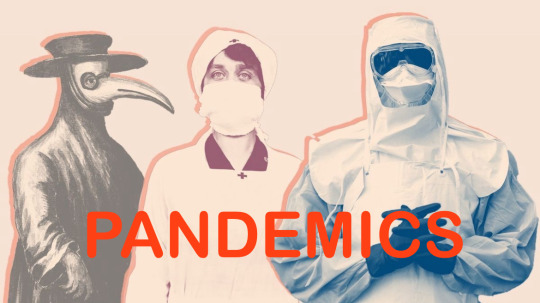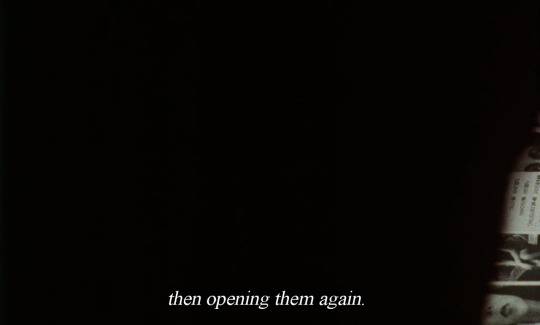#disease
Text
THIS!!
THIS IS AN AMAZING WAY TO THINK OF CHRONIC PAIN
85K notes
·
View notes
Text

#free palestine#free gaza#gaza#palestine#from the river to the sea palestine will be free#pray for palestine#genocide#flooding#disease#diseases#gaza strip#ethnic cleansing#israel#israel is a terrorist state#ceasefire#permanent ceasefire#humanitarian crisis#america#usa
34K notes
·
View notes
Text

Death the Strangler, The First Outbreak of Cholera at a Masked Ball in Paris, 1831. Gustav Richard Steinbrecher. 1851. Wood engraving.
Internet Archive
#death#skeleton#allegorical art#cholera#disease#epidemic#halloween#macabre#1851#19th century#nemfrog#costume party#1k
2K notes
·
View notes
Text

PANDEMICS- Hostile Power Takeover? Learnings on Urban & Domestic Warfare, “Disease: Bacteria Part 1, Fundamental Considerations”:
Let’s say the hostile power is more technologically advanced & half robot/half machine or full machine, so seemingly unkillable. Organic beings are very vulnerable to having disease used as a weapon against them.
Disease can be a major benefit to this type of hostile power & it would be an incredibly powerful weapon. This allows the destruction of an organic-based domestic population & it can also allow the harvesting of resources to build new bodies and/or reuse of the entire body depending on the disease process.
There are many insidious ways diseases develop & spread. This process DOES NOT just occur in a laboratory. Remember that there are many different “groupings” of entities we refer to as pathogens or things with the ability to cause disease.
Bacteria are an important one. Bacteria & other pathogens can reproduce by multiple means. Here I’m going to speak about bacteria with the capacity to do Bacterial conjugation. This involves passing characteristic between two different bacteria similar to how sexual reproduction can pass on characteristics. This is overall an important conversation because a lot of the most complex & common life forms in our daily lives also spread these characteristics through similar principles through sexual reproduction.
> A lot of bacteria to our awareness are able to pass on characteristics. Bacterial DNA contains the “instructions”/“resources” for bacteria to either have or not have characteristics.
-Bacterial conjugation for example allows one bacteria to attach to a second bacteria & send resources to the second bacteria. After this process, the second bacteria is able to transform and display the characteristics transferred to it. Example: Bacteria A can change colors like a chameleon. Bacteria B cannot change color. Once Bacteria A attaches to Bacteria B and they are compatible, Bacteria A passes on resources to Bacteria B. Bacteria B then acquires the ability to change color. Bacteria B now can change color & has attainted the same advantage as originally only bacteria A had. Now Bacteria A and Bacteria B can change color like a chameleon.
- The other way characteristics form & occur in a bacterial population is through mutation. If a bacteria’s DNA is altered or mutates then it can produce a bacteria with new traits & characteristics. Radiation for example, like from X-rays, often causes mutations. Sometimes mutations do “nothing” we can really perceive with our eyes. But overtime, they will eventually create large changes and can produce huge benefits for bacteria. For example: A bacteria could have always have been wiped out from nuclear weapons then overtime from mutations it can acquire the ability to survive living inside an area with nuclear radiation.
-This is a very important concept to fully understand so that you can become cognizant of how insidious this process is when discussing what bioterrorism in the modern world can look like. Pandemics are not caused just from mysterious lab leaks. The practices we do everyday are still contributing to the next pandemic occurring.
-This also gives everyone a better understanding of how MRSA or an antibiotic resistant bacteria really was “made” inside our hospitals.
> Bacteria can possibly have random or genetically engineered characteristics.
-If there are 100 random bacteria on an isolated surface that formed there naturally, some will have favorable characteristics to cause severe disease. But, some bacteria will not have those characteristics to cause severe disease. The bacteria lacking these deadly characteristics, but are still part of the same family of bacteria, would be considered weaker pathogens (weaker pathogen meaning they would cause less severe disease in organic beings).
-**But it is important to remember, If someone purposefully put bacteria down on a surface there is a chance it will not be a random distribution in strength of bacteria & they will mostly all be bacteria with strong characteristics. That group would probably be closer to 100 out of 100 of the bacteria carrying the deadly characteristic.**
>There are 2 main basic premises (which can be further subdivided and added onto when discussing what makes pathogens strong, but for now I’m discussing a more fundamentals explanation) we consider when determining bacterial pathogen strength: number of bacteria & the amount of deadly/harmful characteristics each bacteria possess.
-Reducing the overall number of bacteria in a group of random bacteria does not always mean you make a pathogen less strong. (Example: Purposefully killing 50 bacteria out of 100 and now there are only 50 bacteria in the group.)
If you destroy many of the weaker bacteria & only leave strong bacteria to reproduce, pathogens overtime can get stronger & more deadly. So, by destroying only the weaker bacteria in a group of bacteria, you slowly make pathogens stronger through this natural process & it doesn’t have to occur inside of a laboratory. To make a bacterial pathogen less strong by focusing on decreasing the overall number of those bacteria that exist in our world, you would also have to consider how many of each strength you eliminate. This is because we currently we do not use practices that wipe out groups of bacteria 100%, so we must consider these two elements together instead of separate when evaluating pathogen strength. Example: Lets say there are 100 bacteria and you wipe out 90. Bacteria A can cause humans to be paralyzed. Bacteria B cannot paralyze humans. Out of the 10 bacteria still alive, if all 10 are Bacteria A then you have eliminated the chance people would be infected with the less severe version of the disease, with Bacteria B. In the long term Bacteria A now has a strong chance to reproduce & when Bacteria A infects people it would then cause paralysis in everyone & the population could collapse. In another scenario, consider if you wiped out 90 bacteria out of 100, but you did it purposefully. Out of the 10 bacteria left, 9 were Bacteria that were Bacteria B & couldn’t cause paralysis. The last 1 out of the 10 left was Bacteria A. Then when those 10 bacteria reproduced it effectively helps “dilute” this negative characteristic in this bacterial family. Based off randomness & probability, when there this group reproduces to the size of 20 bacteria only approximately 2 of them may carry Bacteria A’s paralytic characteristic & 18 will carry bacteria B’s characteristic that does not cause paralysis. So, even though we can’t stop the bacteria number from growing, since we mindfully intervened we can still divert the trajectory of the pathogen from becoming a pathogen with the ability to become “pandemic level” and/or very very harmful.
>Two ways pathogens can get weaker is by lowering the amount of bacteria in the world & by lowering its severe disease characteristics, but this these two categories have an important interplay.
-This is an oversimplified explanation of how disease spreads & evolves, but the fundamental principles are VERY important to the overall understanding of what’s occurring. Imagine a group of bacteria you count has 100 total bacteria. 50 of them carry a gene to cause paralysis in humans & 50 do not carry this gene. When 100 people come in contact with the 50/50 bacteria distribution and get sick only 50 out of 100 of the people get paralyzed. This allows the other 50 people time to work on vaccinations & interventions to stop everyone from eventually being paralyzed.
-But, if you kill the 50 out of the 100 bacteria that do not carry the gene for paralysis then your bacteria group went from 100 to a total of 50 in size. In the short term the spread of the disease is likely to go down, as it is less likely people will randomly spread 50 objects instead of 100. BUT, those 50 bacteria with the gene to cause paralysis will only reproduce with other bacteria that also have that gene. So this bacteria, since you wiped out the 50 that don’t cause paralysis, now ALL cause paralysis & anyone who comes in contact with this bacteria strain will get paralyzed. So eventually with time the group of 50 bacteria will reproduce to 100 & spread at the same rate as they were originally, but now they cause more harm to people.
>When you unknowingly touch a colony of bacteria on an object or life form, you pick up a random sample of random “strength” of bacteria.
>****PLEASE READ: you can ALSO pickup a sample of bacteria that is all “strong bacteria” but this is NOT usually a natural occurrence you will see & is suggestive someone or something altered the bacteria and purposefully put those bacteria there. A group of bacteria that looks like it formed organically vs one that was purposefully placed there can be differentiated with taking samples of surfaces and people & counting how many strong bacteria vs weak bacteria there are, but we as a population do not regularly test for this in this way. Due to this I’m going to speak with the viewpoint of natural bacteria groups that have a gradient of “strengths”. In an ideal world we would identity groups of bacteria that have gradients of strength of bacteria vs groups of all similar strength, as interventions to stop them from becoming strong pathogens work DIFFERENTLY.)
>After you touch those bacteria they attempt to multiply and stay alive on you. Then if you touch other things they can be placed on another surface or thing. Sometimes they are placed on other surfaces in an environment or you touch your body & they are placed closer to an entrance to the inside or your body & then they are able to enter your body.
-This process will cause one of the following to occur: bacteria will stay in the area you touched & colonize it, they will die when attempting to enter the body, the bacteria will give you a disease , or in some cases the bacteria will live symbiotically inside you & help your body. If a bacteria lives symbiotically with you & does not cause harm then we do not refer to that as a pathogen, but rather just as a bacteria.
>Anytime you wipe out a group of bacteria by taking out 100% it causes that pathogen to get weaker overall, but the issue is that we do not do interventions that wipe out 100%.
-Currently anytime you clean an object in the hospital with a sanitizing wipe, you always kill less than 100% of the bacteria. This leaves behind a certain % of bacteria & they will be the strongest of that group of bacteria, because they were able to live even though you applied a cleaning product on them. This means the strongest bacteria left, even though there are less after cleaning, are now reproducing over and over again & getting stronger.
-So, when there is an environment with a large amount of bacteria variability (so all these new patients with new exposures to new bacteria that travel and touch things all the time), with shared equipment, with not 100% effective methods to destroy pathogens, & this long list of variables, we slowly produce very strong & deadly pathogens inside of hospitals.
-IF someone purposefully puts deadly bacteria ontop of a surface inside a hospital and it is a group of 100 strong & identical or cloned bacteria with no difference in genetics then wiping them out through imperfect cleaning will overall reduce pathogen deadliness. This is because there are no “stronger” pathogens vs “weaker” pathogens. They are all the same strength in this example and therefore will always get weaker when you reduce their number because they won’t reproduce to be more deadly.
>People often think when people are trying to cause them harm that would only occur when someone makes a pathogen in a lab & then deceptively goes and places some near you. This is not accurate.
-With knowing this do you see how for a hostile power there is actually LESS incentive to going through with all that work & instead a hostile power can abuse the system to cause harm? If you expect biological warfare to ONLY come out of a lab, this means you would be looking for the wrong patterns of behavior & pathogens will spiral out of control.
A lot of practices we currently use now unfortunately heavily contribute to this process that causes pathogens to get stronger.
#pathogens#doctor#medicine#physician assistant#nursing#nurse#registered nurse#evolution#disease#bacteria#np#nurse practitioner#pa#md#rn#meds#pharmacy
421 notes
·
View notes
Text
"Possible encounter" meaning something like finding a bat in the room where you were sleeping, so you don't know if you came into contact with the animal or not.
Because there will be numbers cited and then pedantic corrections in the comments: rabies is 99.9% fatal in humans after symptoms begin to show. There have been fewer than 20 documented cases of humans surviving rabies after becoming symptomatic, and these cases took extreme, experimental medical intervention.
If you are exposed to rabies or think you may have come into contact with an infected animal, seek medical attention– when given within 10 days of exposure, the vaccine is 100% effective at preventing rabies.
And make sure your pets are up to date on their vaccines, even if they're indoor-only!
–
We ask your questions so you don’t have to! Submit your questions to have them posted anonymously as polls.
#polls#incognito polls#anonymous#tumblr polls#tumblr users#questions#polls about critters#submitted may 17#polls about health#disease#rabies#animal disease
569 notes
·
View notes
Text
This doctor talks about signs of an epidemic happening in Gaza
One of the symptoms is the skin and eyes turning yellow. If you look at Palestinians posting on social media like Bisan and Mansour, you can see their skin turning yellow.
Its unfortunately not the only disease spreading as hospitals are being destroyed and food and water remains scarce.
#yemen#jerusalem#tel aviv#current events#palestine#free palestine#gaza#free gaza#news on gaza#palestine news#news update#war news#war on gaza#epidemics#disease#genocide
932 notes
·
View notes
Text





The Body Beautiful (Ngozi Onwurah, 1991)
#The Body Beautiful#Ngozi Onwurah#short film#1991#quote#disease#cancer#hands#blind#imagination#illness#Sian Martin#eyes
1K notes
·
View notes
Text

#pay attention#educate yourselves#educate yourself#knowledge is power#reeducate yourself#reeducate yourselves#think about it#think for yourselves#think for yourself#do your homework#do your research#do your own research#ask yourself questions#question everything#food#food supply chain#contaminated food#contaminated water#disease#history lesson#history#hidden history#government corruption#fda corruption#poisoning humanity#food poisoning
353 notes
·
View notes
Text
There is a disease that makes you all bitey and it is transmitted by getting bitten. And I was bitten by a VERY angry lovebird.
457 notes
·
View notes
Text

Otto Seitz (1846-1912) - The Black Kitchen of Death
illustration from Jugend #24, 1896
#otto seitz#the black kitchen of death#19th century#19th century art#jugend magazine#1896#horror art#dark art#symbolism#allegory#cholera#influenza#disease#pandemia#death#death in art#art nouveau#art#illustration
201 notes
·
View notes
Text
Explore the world of early bacteriological research with this historical footage from the Wellcome Trust, now available on JSTOR. This short film, dating back to between 1910 and 1919, showcases the movement and agglutination of typhoid and cholera bacilli, providing a rare glimpse into the origins of modern bacteriology. Believed to be one of the earliest surviving film records of this type, it highlights cultures possibly from the Bombay Plague Laboratory (now the Haffkine Institute for Training, Research & Testing).
Dive into this unique piece of scientific history.
Clip: Bacillus Typhosus (Typhoid and Cholera Bacilli). Wellcome Collection.
358 notes
·
View notes
Text

"Malaria once cast a long shadow over Lao PDR [Laos]. In 1997, an estimated 462,000 people were infected with significant economic and social impacts.
Education and employment were disrupted, and countless lives were lost. The disease's grip extended far beyond the initial illness, with long-term health consequences a heavy burden on communities.
However, a dramatic shift has occurred. Thanks to accelerated strategies implemented by the National Malaria Control and Elimination Program, Ministry of Health and its partners, including the World Health Organization and United States Agency for International Development (USAID), malaria cases have dropped by over 90 percent over the past decade, with just 809 cases in 2023. The nation is now on the brink of eliminating Plasmodium falciparum, the deadliest malaria parasite, by the end of 2025.
While many unsung heroes play crucial roles behind the scenes, including at the community level, a key group is laboratory technicians (microscopists). These dedicated individuals are the eyes on the ground, detecting, tracking, and monitoring malaria cases in high-risk areas...
While rapid tests are valuable tools, Somphan emphasizes the importance of microscopic examination – considered by WHO to be the “gold standard” for malaria diagnosis, and an important skill for every country’s health workforce to maintain for malaria elimination, and broader health security efforts.
Positively - her efforts, and the efforts of healthcare workers and health educators, are paying off.
"People are now more aware of malaria and its dangers," Somphan says. "They have come to understand the seriousness of malaria and the importance of early diagnosis and proper treatment. They now recognize that avoiding hospitalization could lead to prolonged illness and greater disruption to their lives…they are more likely to seek medical attention, even for mild symptoms."
The increasing number of patients coming for testing – sometimes up to 40 per day – is a testament to increased capacity and awareness in the community. But, she notes – they more increasingly have quiet days – a reflection of progress towards eliminating the disease."
-via USAID, August 20, 2024
221 notes
·
View notes
Text
It is no secret that Israel attacks the most vulnerable and will do so by any means. The truth is in everyone's face yet so many people refuse to see this as a genocide.
#free palestine#palestine#gaza#free gaza#from the river to the sea palestine will be free#pray for palestine#diabetic#diabetes#insulin#ableism#disease#israel#israel is committing genocide#genocide#ceasefire#permanent ceasefire#america#usa
8K notes
·
View notes
Note
Do we have any records of fossil dinosaurs afflicted with illnesses? I guess fossils wouldn't really make it easy to preserve dinos that died from proto-flu, but what about stuff like cancers or malformations?
We do actually! Paleopathology is a whole field and there are tons of specimens that showcase signs of illnesses and injuries! It's really cool actually. there are so many examples that I can't even find the one I wanted to share as a prime one (it was an ornithopod that had a whole cancer study done, can't find it anywhere)
but infections were common and there's tons of studies about the signs of those in fossils as well!
787 notes
·
View notes
Text

COVID denialism and misinformation has led to Olympic athletes not even washing their hands because they wrongly think it will help them become more resistant against disease.
There is no evidence handwashing weakens your immune system. There is no evidence that adopting unsanitary practices makes your immune system stronger. But there is a lot of evidence that handwashing and other precautions protects you and others from infectious diseases, especially in risky environments like bathrooms.
https://www.reddit.com/r/HermanCainAward/
https://www.sorryantivaxxer.com/
#eugenics#health#sanitation#sethrider#infectious diseases#disease#reckless#occupational health and safety#alerta#alert#ausgov#politas#auspol#tasgov#taspol#australia#fuck neoliberals#neoliberal capitalism#anthony albanese#albanese government#mental health#healthcare#health & fitness#health and wellness#healthylifestyle#long covid#covid 19#covid isn't over#covid conscious#covid
123 notes
·
View notes
Text

Guadalupe Maravilla Appeals to the Children of War in a New Series of Retablos
229 notes
·
View notes